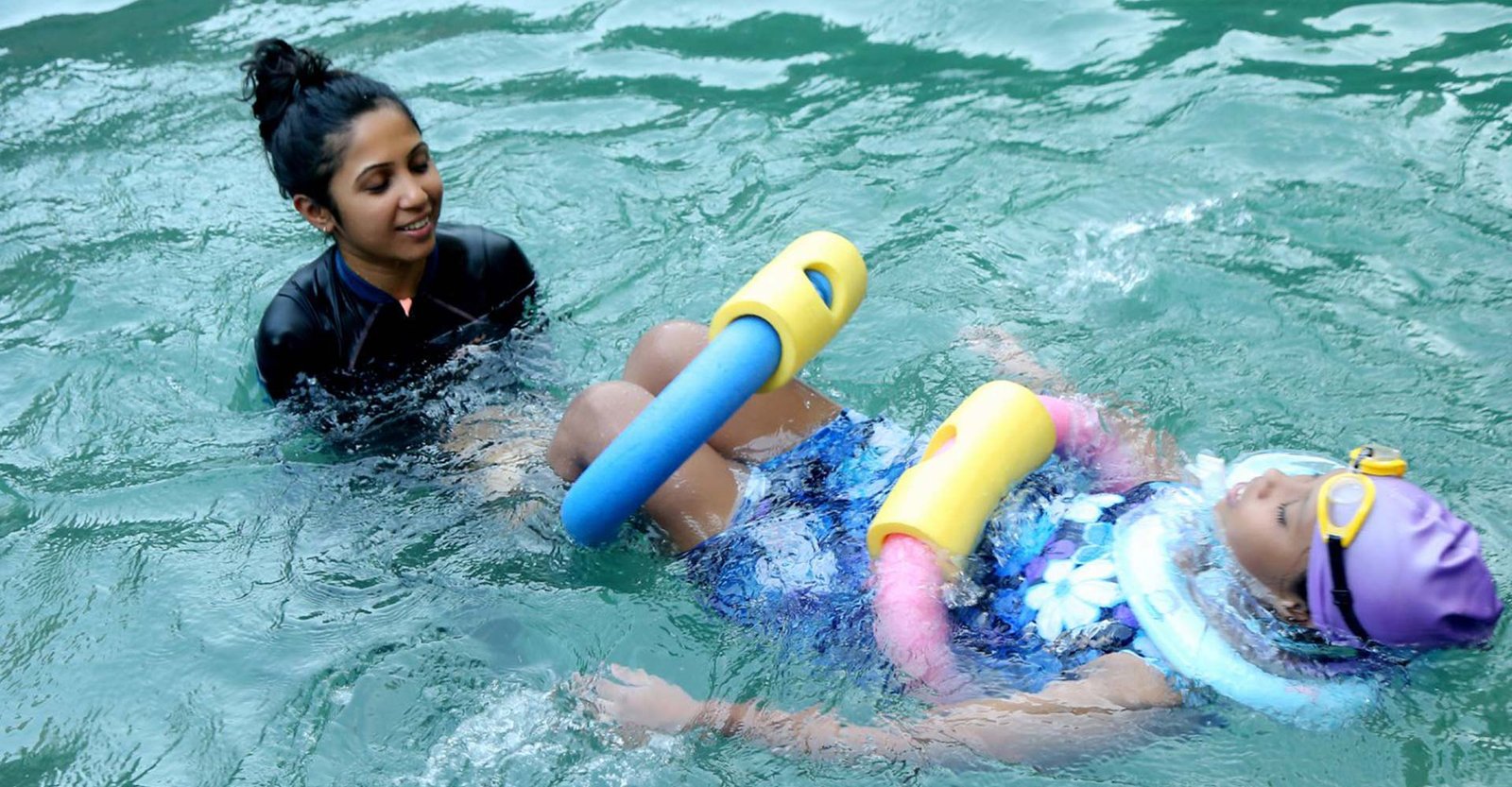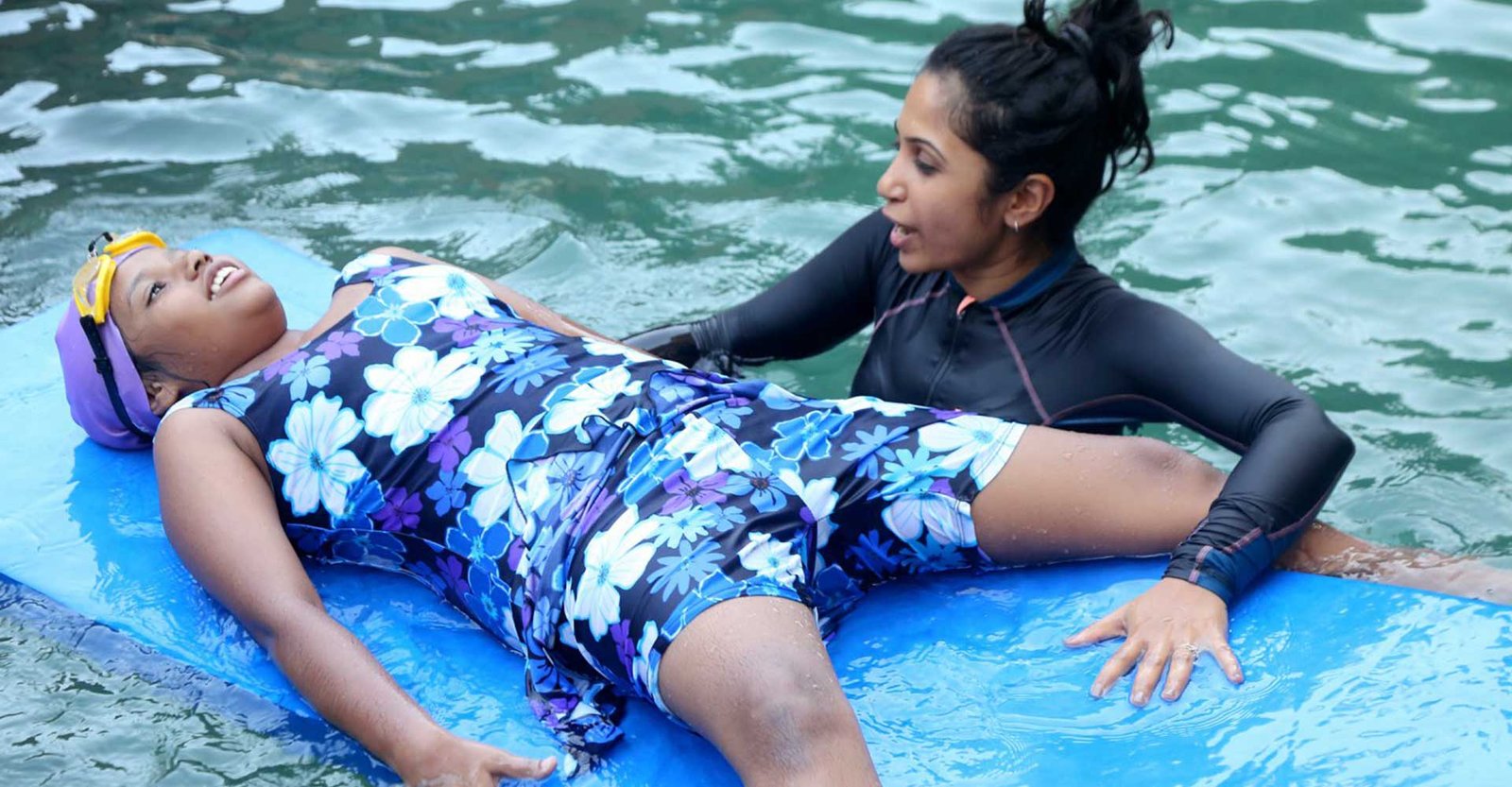Therapists use the water and specifically designed activities to enhance, restore, and maintain a person’s functional abilities.
Aquatic therapy is often confused with hydrotherapy. There is a difference in them. Hydrotherapy is performed differently in Hubbard tub.
Aquatic therapy is being practiced worldwide and an advance therapy to heal patients earlier. There are various approaches like Burdenko method, Halliwick therapy and Bad Ragaz Ring method. These different techniques are used for patients with neurological disorder or musculoskeletal problems. We treat them on one on one basis where a therapist enters water and helps patient to enter in water. These sessions are only taken after a thorough Aquatic assessment of the patient so the best therapy can be deliver to them. There are many equipment’s constructed only for Aquatic therapy enabling aid and providing resistance which are use for rehabilitation from any injury or disorder.
Aquatic therapy can be done for acute injuries, chronic pain, pre op rehab, post op rehab, pre-natal care, sports injuries, tightness or weakness of muscle, balance, co-ordination, etc.
Though aquatic therapy is not recommended for certain medical conditions, the vast majority of people can participate.
Through Aquatic therapy, I have been treating cases of arthritis, low back pain, heel pain, flat feet, musculoskeletal & degenerative changes problem, post bypass, pre & post operated rehabilitation, hernia, spondylitis, weight loss, general fitness, marathon training, osteoporosis, osteopenia, disuse muscular atrophy, ank spons, RA, frozen shoulder, thyroid, diabetes, Myositis ossificans, menopausal symptoms & PCOD…. Etc.
Special cases of Cancer, exercises induced asthma.
Have been seeing Neurological cases like; NMO, CP, Hemiplegia, Parkinson’s, pre mature baby – hypotonia and delayed milestones, Myasthenia Gravis…. Etc.
What are the benefits of Aqua PHYSIOTHERAPY?
- After an illness, injury, or surgery, a patient’s sensitivity to pain may be increased or the ability to bear weight on the injured area limited.
- In water, the pull of gravity on the body is not as strong as on land, therefore motion and functional activity are more comfortable.
- Water supports the body, reduces joint stress, and provides resistance and assistance to movement.
- Patients can improve mobility, strength, and function rapidly during the healing process.
Other benefits include:
- Improved muscle strength and tone
- Increased cardiovascular function
- Reduced stress
- Decreased swelling
- Increased circulation
- Increased strength and endurance
- Increased range of motion and flexibility
- Increased balance and coordination



